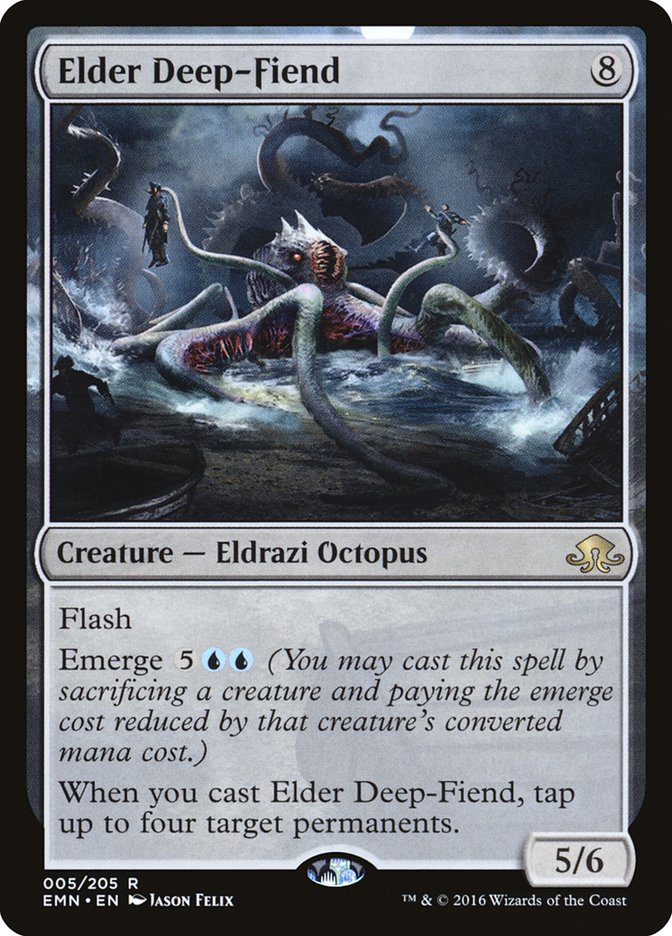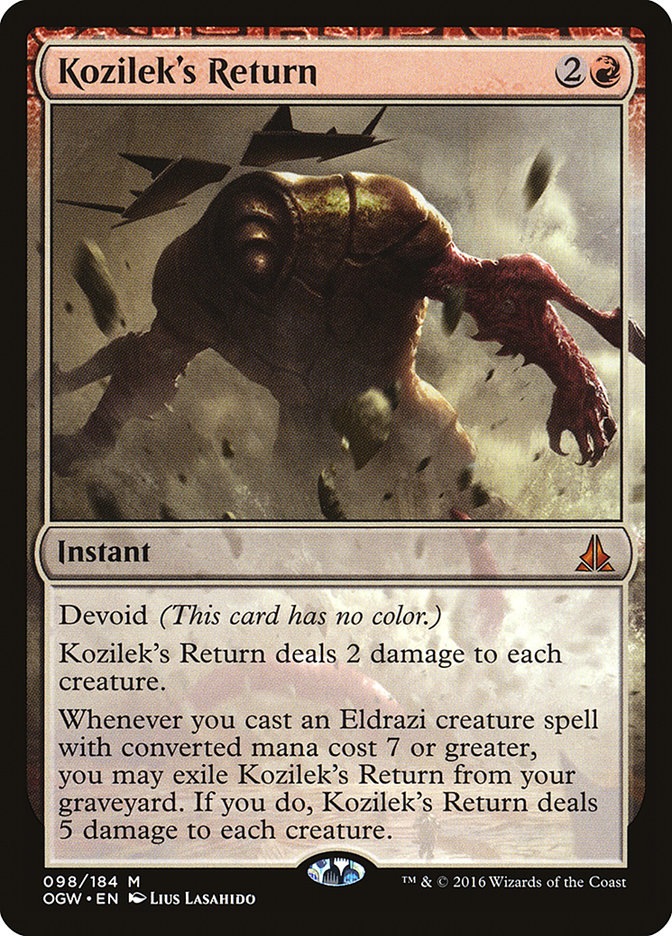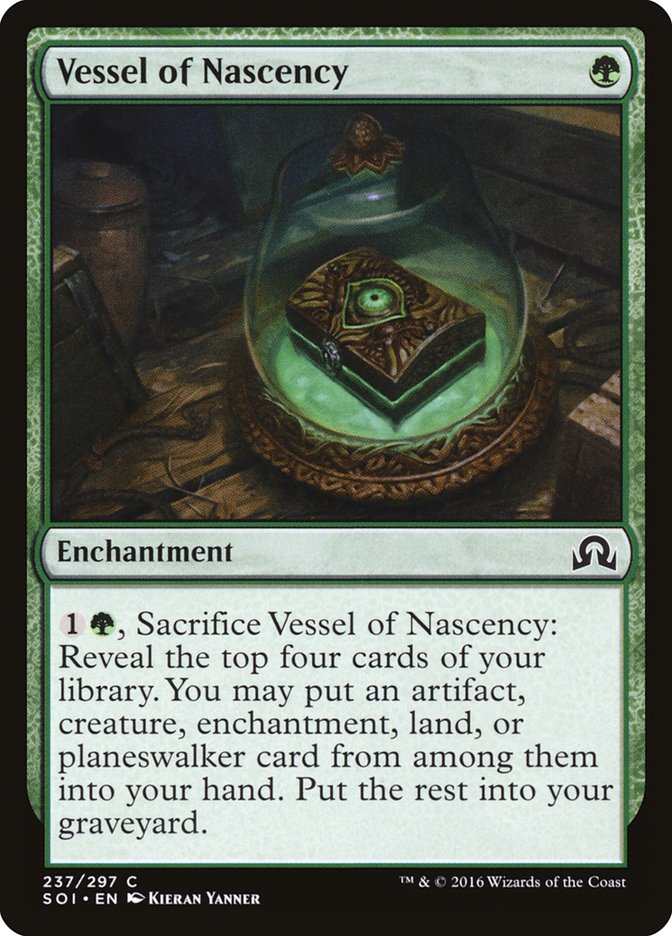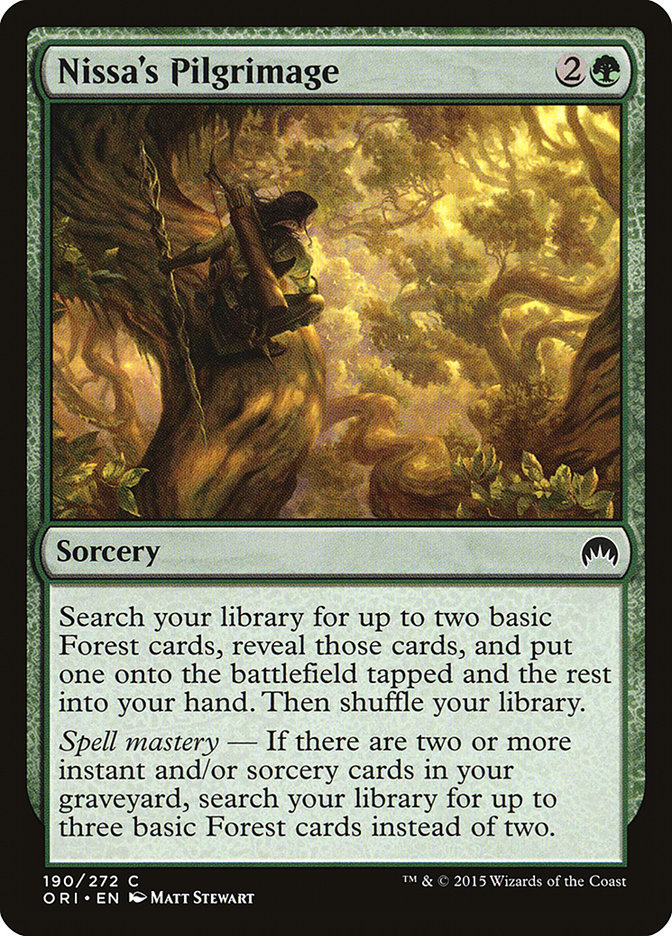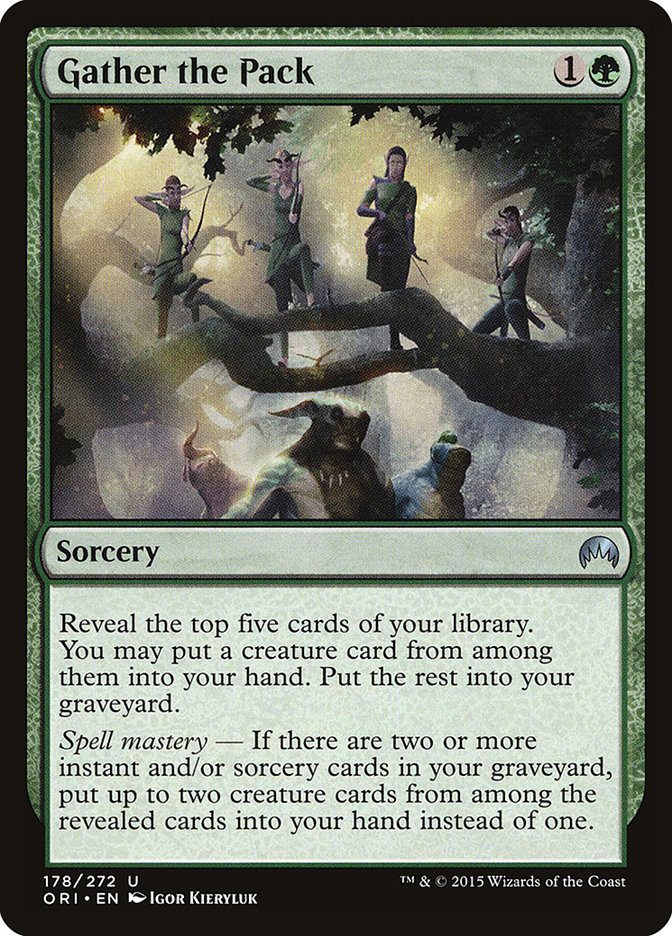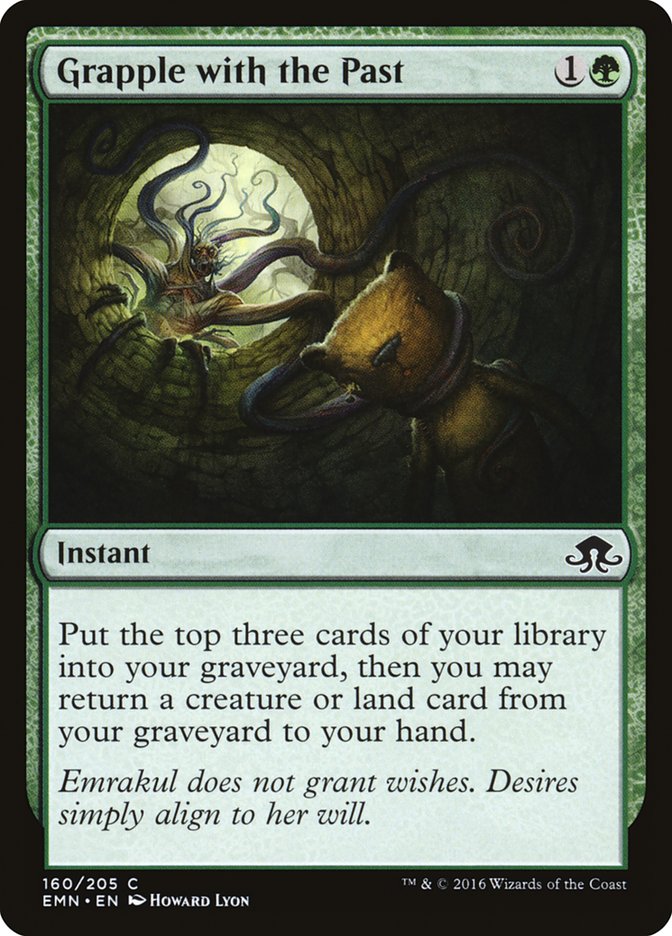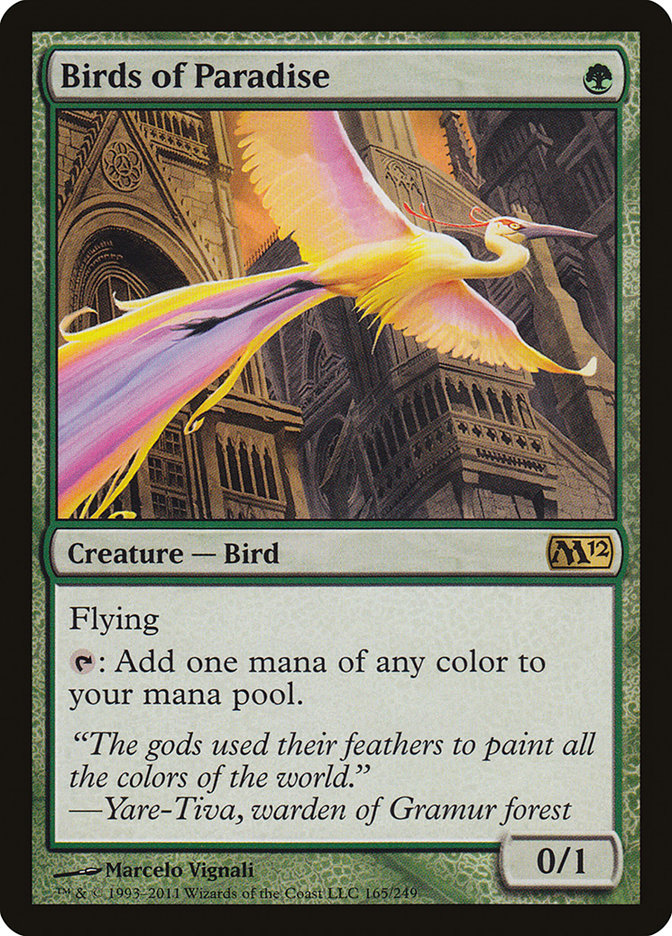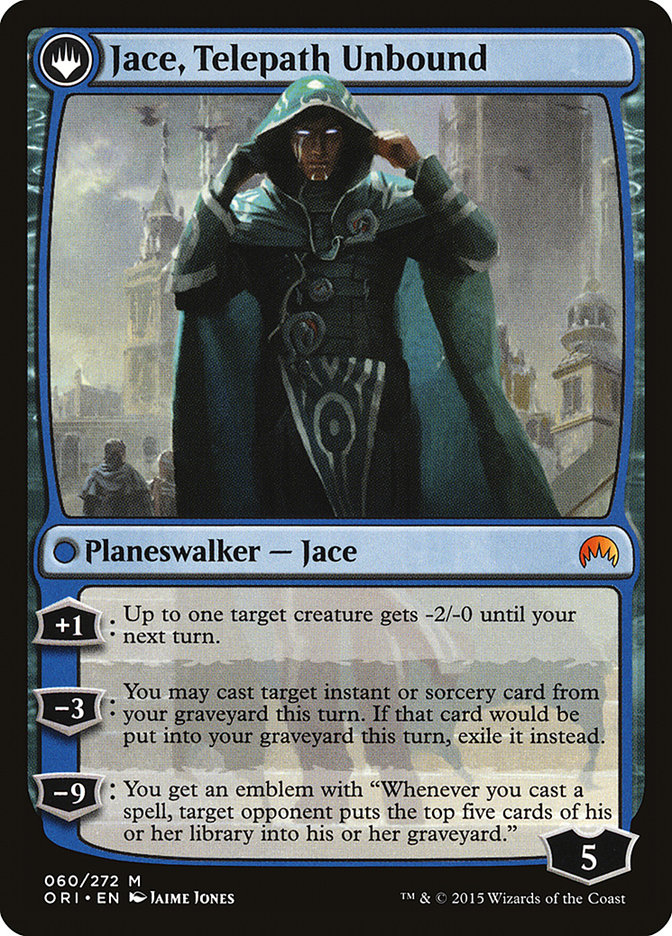Coming up with a new article each week can be hard. Sure, there’s a glimmer of narcissism associated with being able to listen to yourself talk for 2,500+ words every week, but thinking of a topic to talk about isn’t always easy.
I generally have a shortlist of topics to fall back on if I can’t think of something topical to write about or a particular issue that needs addressing as soon as possible.
Last week I finished my shortlist.
My Magic Sampler had tapped the last couple of ideas I had and I found myself without a topic for this week. Talking about the Pro Tour is easy, but those who attended the event are going to have better insight on the topic; talking about decks from the Pro Tour is a shaky proposition due to the decks’ original constructers having so much more insight on the topic than someone in my position, seeing it for the first time as the final product. This left me in a position of having to think of something on relatively short notice.
Despite being somewhat distracted by this pressure, I found myself undefeated in the early rounds of #SCGRegionals sitting diagonal to one Gerry Thompson. At some point during his match, a complicated scenario came up during which Gerry had multiple triggers occurring between Elder Deep-Fiend and two copies of Kozilek’s Return in the graveyard, and it wasn’t clear when the triggers were occurring in relation to one another.
While they were resolving their judge call, I had a similar scenario in which I ordered the triggers in a way that was difficult for my opponent to play around, and we joked about my instantly stacking the triggers. Ha! There was a great article topic: understanding how to sequence multiple effects in relation to one another.
The Relevance of Sequencing
Sequencing is something that is best described as “the order in which actions are taken.” It can be related to anything: the order that spells are cast on different turns, cast on the same turn, over the course of a game, and so on. With some cards and how they interact with triggered abilities, it can be relevant what order the ability’s controller places them on the stack. Take Owen Turtenwald’s Temur Emerge deck from the Pro Tour:
Creatures (16)
- 3 Pilgrim's Eye
- 3 Emrakul, the Promised End
- 1 Wretched Gryff
- 4 Gnarlwood Dryad
- 3 Elder Deep-Fiend
- 2 Ishkanah, Grafwidow
Planeswalkers (1)
Lands (21)
Spells (22)

In this deck there are two key aspects of the deck that require sequencing: cantrips and cast triggers.
Cantrip Sequencing
Cantrips are cards that have an effect, followed by the card replacing itself. In this deck, the cards that are most easily considered cantrips are Grapple with the Past, Vessel of Nascency, and Gather the Pack (with an honorable mention to Nissa’s Pilgrimage). All of these cards being cast in the proper order (in relation to one another) is crucial to maximizing the value to be garnered from each spell. So what’s the order to cast them?
The answer can take a bit of deliberating between different spells. The best order to maximize as much value as possible is as follows:
2. Nissa’s Pilgrimage
Why in this order? What makes casting these in this order better? The best way to approach answering this question is to figure out the scenario that is most likely to provide each spell with the highest upside.
Vessel of Nascency is the easiest. It is the most straightforward cantrip with the most possible “hits” in the deck, requiring nothing more than a permanent card (land, creature, planeswalker, artifact, or enchantment) to be revealed. It also puts more cards in the graveyard than either Nissa’s Pilgrimage or Grapple with the Past, which assists the deck’s ultimate goal of casting an Emrakul, the Promised End for six or seven mana.
Nissa’s Pilgrimage is the card that requires the most specific cards to still be within the library at any point. Nissa’s Pilgrimage is something that (in an ideal world) would actually come before Vessel of Nascency if it weren’t for having a converted mana cost of three.
There are a nonzero number of scenarios in which Nissa’s Pilgrimage doesn’t find the full number of Forest cards that it wants just because the rest are either already on the battlefield or have been dumped into the graveyard by the deck’s other cantrips. Nissa’s Pilgrimage technically being the narrowest cantrip (being able to add nothing but Forests to its caster’s hand) means that it needs to be cast before the cards it would normally add are no longer in the owner’s library.
An added bonus of Nissa’s Pilgrimage being a ramp spell means that it gives its caster the ability to cast additional cantrips the following turn.
The reasons that Gather the Pack wants to be cast after other spells (when possible) are twofold.
First, Gather the Pack is a more powerful card if it is adding more cards to its caster’s hand by virtue of having the spell mastery effect enabled. Nissa’s Pilgrimage also falls under the category, but the difference in effect between a regular Gather the Pack and a Gather the Pack with spell mastery is greater than with Nissa’s Pilgrimage. Being able to grab multiple Eldrazi later in the game can be the difference between a game win and a game loss.
Gather the Pack is also the narrowest cantrip in the bunch, so having the fewest noncreature cards remaining in the library is crucial to ensure that Gather the Pack doesn’t totally miss and find zero creatures. This reduction makes casting Nissa’s Pilgrimage before Gather the Pack a bit more important than the other way around.
Grapple with the Past is likely the easiest to work out why it should be used last. Grapple with the Past has the highest failure rate with an empty graveyard (as in, it’s easy to mill three cantrips and then not get anything back with Grapple). On the other side of the coin, Grapple with the Past also has the highest ceiling later in the game because it can get back cards that went through the graveyard through more natural means (removal, dying in combat, etc.) and isn’t limited to the cards that it finds within the top three cards of its caster’s library.
Cast Triggers
Cast triggers are the things that happen upon casting the larger Eldrazi spells within the deck. Due to Kozilek’s Return’s second effect, it is common to have multiple abilities be placed on the stack after casting a single spell, and getting the proper order is crucial.
When casting an Elder Deep-Fiend and choosing targets to tap down with the 5/6, it’s important to assess the battlefield and cards that the opponent could have in order to figure out if Kozilek’s Return should resolve before or after the Deep-Fiend taps things (spoiler: it’s usually afterwards).
The resolution of Kozilek’s Return coming second is due to the presence of flash creatures that can affect creatures being tapped down by Elder Deep-Fiend. It also forces the opponent to float mana and cast their spells in response to the Elder Deep-Fiend’s trigger before the controller chooses whether or not to exile Kozilek’s Return*.
*An aside on Kozilek’s Return: It’s important to note that Kozilek’s Return doesn’t become exiled until the resolution of the effect. This means that if the opponent sacrifices a Selfless Spirit in response to the trigger, it is likely not in Kozilek’s Return’s owner’s best interest to exile the spell from their graveyard. This is a lot of what makes Kozilek’s Return so hard to play around.
This type of thinking can even be applied when prioritizing answers to the opponent’s cards over your own cards.
The phrase “Always Bolt the Bird” illustrates and example of an old homage that basically translates to “always kill the early mana creature.” The reasoning for this is that a mana creature will generally put the opponent so far ahead of you that you will regret not using an early removal spell to deal with it.
Consider this thinking in the context of Standard right now. There aren’t many decks going as far as playing Hedron Scrabbler, but what about Jace, Vryn’s Prodigy? A turn 2 Jace, Vryn’s Prodigy may appear innocuous, but Jace, Telepath Unbound is a threat that will eventually have to be dealt with, lest it either gain too much value off of the Flashback ability or close a game with its ultimate.
This means that the choice is the opponent’s to spend the second turn dealing with Jace or spend what would normally be a more powerful turn (turn 4 or later) dealing with the same card. From a tempo perspective, it is generally more important to relinquish a less impactful turn in the name of killing a threat from the opponent instead of reducing the impact of a more important turn.
For a card as value-oriented as Jace, Vryn’s Prodigy, it also makes a lot of sense to try to kill the Jace as quickly as possible. Every activation of the Jace that its controller gets is an extra chance to sculpt their hand and refine their gameplan to combat the opponent. Lessening Jace’s impact has a very real value that shouldn’t be ignored.
Do It Yourself
Applying the aforementioned cantrip sequencing takes a bit of practice and is an acquired skill. To try it in an older format, take a look at Chris VanMeter’s Omni-Tell deck that he used to take down a Legacy Premier IQ:
Creatures (2)
Lands (18)
Spells (40)

In this particular deck there are a handful of cantrips, and sequencing them properly is pertinent in assembling a hand that can combo with a little bit of countermagic for backup. Considering that a very specific series of cards is required in order to combo off, context isn’t quite as important as it normally would be, so what is the proper order to sequence Brainstorm, Preordain, Ponder, Gitaxian Probe, and Impulse?
First, it is important to note which cards may change the impact of other ones. Casting a Ponder and choosing to shuffle with the card could send anything put on the bottom by Preordain or Impulse back to the top. On the other hand, cards put on top of the owner’s library with Brainstorm are generally welcome to be shuffled away. This leads the first impression of the proper sequence to look like this:
1. Brainstorm
2. Ponder
3. Preordain
4. Impulse
This becomes a little more complicated with the existence of fetchlands in the deck and the way that Brainstorm works.
With Brainstorm, the cards that are placed back atop its caster’s library are the cards to be shuffled away or gotten rid of; on the other hand, Brainstorm also functions more potently when the caster has more information to work with. This heavily incentivizes the Omni-Tell player to cast the rest of the deck’s cantrips in order to figure out which cards should be going back to the deck. This gives the following order:
1. Ponder
2. Preordain
3. Impulse
5. Brainstorm
But wait! Doesn’t this lock the deck’s pilot into a specific set of cards on top of their library? Without a way to scry or shuffle the cards away, this seems counterintuitive.
This is correct, but not in its entirety. The Omni-Tell deck has fetchlands that allow the deck to clear the top of its library of unwanted cards, but this also complicates cantrip sequencing by resetting cards that may have been on the bottom of the library.
This adds a sort of “bonus level” to the cantrips that makes the deck more complicated but rewarding to an experienced player:
1. Basic Island
2. Ponder
3. Brainstorm
4. Fetchland
5. Preordain
6. Impulse
Oftentimes in Legacy it is correct to try to hold fetchlands until the end of the opponent’s turn for bluffing purposes, but in decks as linear as Omni-Tell, it is more valuable to increase the odds of drawing the final combo pieces of a deck by sacrificing the fetchlands before resolving (non-Brainstorm) cantrips if there are going to be more draw steps before the combo is executed. Past that point, things tend to become more contextual and rooted in the actual cards that are drawn off of cantrips and how many combo pieces are missing from the final puzzle, so-to-speak.
In Closing
All of these ideas may seem complicated but are rooted in a singular idea: positioning. When putting triggers on the stack or casting spells, it is important to get as much out of every card spent and each ability that is resolved. This will put unwinnable games within reach of turning around and make sure that the game will stay just out of reach for the opponent when you are ahead.


